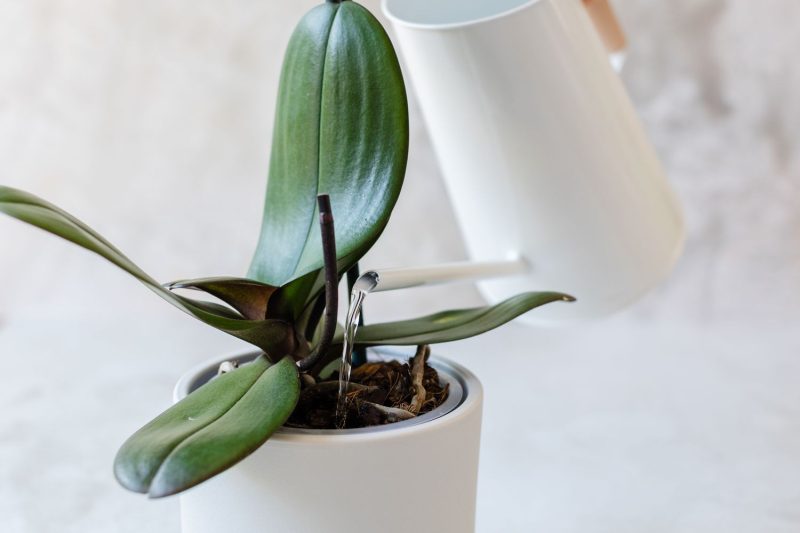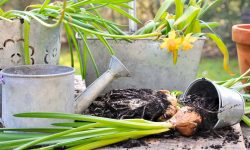Renowned for their elegance and rarity, orchids are cherished by plant enthusiasts and gardeners worldwide. Their delicate blooms and unique structures can transform any space into a paradise of natural beauty. However, a common frustration many orchid owners face is when their plants produce healthy leaves but stubbornly refuse to bloom. If you find yourself wondering, “Why are my orchids not blooming?” you are not alone.
Understanding the causes behind poor flowering and applying the right care techniques are essential to coax your orchid into a magnificent display of blossoms. This article delves deep into the top reasons why orchids fail to bloom and provides practical, expert solutions to bring life and color back to your plants.
Understanding Orchid Blooming Cycles

Before exploring the reasons orchids may not bloom, it’s important to understand their natural blooming cycles. Most orchid species bloom once a year, although some may flower multiple times under ideal conditions. The blooming period depends on the species, environmental factors, and care routines.
Orchids develop flower spikes that emerge from the plant’s base or pseudobulbs, which require specific triggers such as temperature fluctuations, light exposure, and rest periods. Without these signals, orchids may enter a prolonged vegetative state, focusing their energy on leaf and root growth instead of flowers.
Knowing this natural rhythm helps in diagnosing issues and implementing corrective measures to encourage blooming.
Insufficient Light Is the Primary Cause
Orchids need the right amount of light to initiate flowering. Too little light is a leading cause of failed blooms. While orchids generally prefer indirect, filtered light rather than direct harsh sunlight, they still require adequate brightness.
Many indoor orchid growers place their plants in spots that are too dark, such as north-facing windows or shadowed corners. Without enough light, orchids cannot produce the energy necessary for flowering.
Signs of insufficient light include dark green leaves and lack of flower spikes. To fix this, move your orchid to a brighter location, ideally an east- or west-facing window, where it receives morning or late afternoon sun. If natural light is limited, supplemental grow lights designed for orchids can provide the required spectrum and intensity.
Temperature Issues Affect Blooming
Temperature plays a crucial role in orchid flowering, particularly the difference between daytime and nighttime temperatures. Many orchid species require a temperature drop at night to trigger flower spike development. This drop mimics natural environmental conditions that stimulate blooming.
If your orchid remains in a consistently warm environment without sufficient temperature variation, it may fail to bloom. On the other hand, exposure to cold drafts or frost can damage the plant and buds.
Ideal conditions often involve daytime temperatures around 70–80°F (21–27°C) and nighttime drops to 55–65°F (13–18°C). Adjusting your orchid’s environment to include these fluctuations encourages flower spike formation.
Overwatering and Root Health Problems
Healthy roots are essential for orchid blooming. Overwatering is a common mistake that leads to root rot, depriving the plant of nutrients and oxygen. When roots are compromised, the orchid’s overall health declines, and flower production ceases.
Unlike many houseplants, orchids prefer to dry out between waterings. Their roots are adapted to well-drained conditions, often growing exposed to air in their natural habitats.
Signs of overwatering include soggy potting media, black or mushy roots, and yellowing leaves. To remedy this, repot your orchid in fresh, well-draining orchid bark or moss, prune away rotten roots, and water only when the medium feels dry to the touch. Proper watering encourages healthy root growth and ultimately blooming.
Improper Fertilization Affects Flowering
Feeding orchids with the right nutrients at the right time is vital for blooming. Fertilizing too frequently or with unbalanced nutrients can lead to lush foliage but no flowers.
Orchids benefit from fertilizers formulated specifically for them or balanced houseplant fertilizers diluted to half strength. A fertilizer with a higher phosphorus content promotes flower development.
It is best to fertilize orchids every two weeks during active growth periods and reduce feeding during rest periods. Over-fertilization can cause salt buildup in the potting medium, harming roots and preventing blooms.
Regular flushing of the potting media with water helps remove excess salts and maintain a healthy environment.
Lack of Rest Periods Prevents Bud Formation
Many orchids require a rest period, a phase of reduced growth and lower temperatures, to stimulate flowering. Without this downtime, orchids can continue growing leaves but fail to develop flower spikes.
For example, Phalaenopsis orchids usually need a cooler, drier rest period in the winter months to trigger blooms.
Identifying the specific needs of your orchid species and replicating seasonal changes in your care routine can help mimic natural conditions that encourage blooming.
Inadequate Humidity Levels
Orchids generally thrive in environments with 50–70% humidity. Low humidity causes stress, leading to poor flowering or bud drop.
Indoor environments, especially with heating or air conditioning, can be very dry. Increasing humidity around your orchids using humidifiers, pebble trays filled with water, or grouping plants together can create a more favorable microclimate.
Proper humidity supports healthy growth and flowering.
Lack of Proper Air Circulation
Good air circulation prevents fungal diseases and allows orchids to transpire effectively. Stagnant air can increase the risk of infections that damage flower buds or prevent their formation.
Placing a small fan nearby on a low setting or ensuring your orchid is in a well-ventilated area helps maintain healthy airflow without exposing the plant to cold drafts.
Pest and Disease Interference
Pests such as aphids, mealybugs, and spider mites can damage buds and prevent blooming. Similarly, fungal infections may attack flower spikes or buds, causing them to fall prematurely.
Regular inspection, cleaning leaves, and treating infestations promptly with appropriate insecticides or organic remedies safeguard orchid health and blooming potential.
Potting Medium Age and Repotting
Orchids require repotting every 1–2 years to refresh their potting medium, which breaks down over time. Old or decomposed medium retains moisture excessively and reduces oxygen to roots, hindering bloom production.
Repotting into fresh bark or sphagnum moss provides better aeration and drainage, promoting root health and flower spike formation.
Stress from Physical Damage or Transplant Shock
Physical damage from moving, pruning, or environmental shocks can stress orchids. Stress often causes plants to prioritize survival over flowering.
Being gentle during repotting, avoiding excessive pruning, and providing stable conditions help minimize stress and encourage blooming.
How to Encourage Orchids to Bloom Again
After identifying and correcting issues, fostering blooming involves patience and consistent care.
Focus on providing adequate light, proper watering, balanced fertilization, and maintaining ideal temperature and humidity. Removing spent flower spikes and trimming unhealthy leaves also directs energy to new growth and flower production.
Using bloom stimulators or growth regulators, available at garden centers, may assist in certain cases but should be used as a supplement to good cultural practices.
FAQs About Orchids Not Blooming
How often do orchids bloom?
Most orchids bloom once per year, typically lasting several weeks to months, depending on the species.
Can I force my orchid to bloom?
Providing optimal light, temperature variation, and rest periods can encourage blooming but forcing blooms prematurely is generally not recommended.
Why does my orchid drop buds before blooming?
Bud drop often results from environmental stress such as temperature shocks, low humidity, overwatering, or pest problems.
When should I repot my orchid?
Repotting is best done right after blooming or when the potting medium breaks down, usually every 1–2 years.
What fertilizer is best for orchids?
Use a balanced orchid fertilizer, preferably one higher in phosphorus to promote flowering, diluted to half strength.






